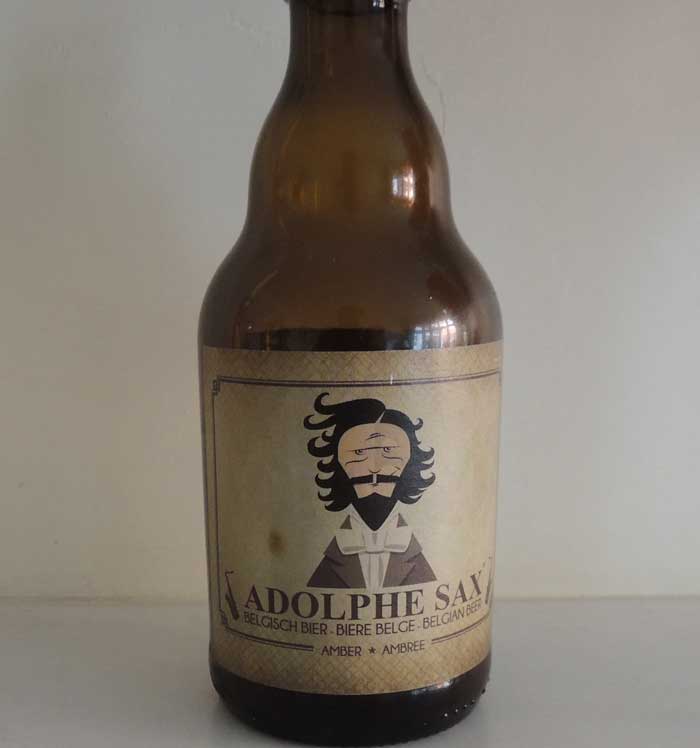I have not measured the bore, but if it is comparable to the original it should also be comparable to the Buescher with the true tone logo and the Carl Fischer saxophones.
Different from the Adolphe Sax original it has more and bigger tone toneholes and a ribbed construction.
Also the presence of reflectors is different from the original, but not from the Buescher.
Bueschers with the True Tone logo were available for 60ish years until Selmer bought them. It was a trademark.
Some people have said that the Buescher True Tone saxophones had a "parabolic bore" -- mind you, a saxophone with a parabolic bore is something a lot of folks more schooled than me think doesn't exist -- that was similar to A. Sax's original design. The people that do think that there is a parabolic bore think that it was discontinued either when the first Buescher Aristocrat came out or when the "Big B"-engraved Aristocrat was discontinued.
FA Buescher did create the first American-made saxophone, but that was for CG Conn and before Buescher had his own company. The "first American saxophone" did look an awful lot like an A. Sax instrument.
Carl Fischer did not make saxophones. They were an importer for a bunch of different makes and models, most notably Evette-Schaeffer Buffet-Crampon et cie. I've never heard that they exported instruments from North America, but I assume that's possible. Unfortunately, this makes it impossible for me to know what horn stamped "Carl Fischer" is one that you think is like an original A. Sax instrument.
The bore size is one of the most important choises in saxophone construction.
On one side we find Selmer, a lot of Selmer clones, Martin and Couturier and on the other side we find Keilwerth and R&C.
There is not much inbetween, so this design is an interesting compromis.
Regarding the bore comment, the idea behind the saxophone is that you have to have a conical bore in a particular proportion or you'll have something that doesn't sound like a sax or sound sax-like, but be horribly out of tune. As a matter of fact, people use this "proportion argument" to say that Benedikt Eppelsheim's Tubaxes aren't really saxophones.
There are a couple thousand different makes and models of saxophone. Limiting all saxophones to "Selmer, Selmer clones, Martin, Couturier, on one side, and Keilwerth and R&C on the other" is an extreme oversimplification. Hey, the saxophone was patented in 1846 and Selmer didn't sell their first saxophone until 1922.
Martin and either EA Couturier or the French Couturier company (note: two completely different companies) haven't produced saxophones in 50 years or more. The French-made Couturier horns I've seen predate the "big name" Selmers by a bunch of years and EA Couturier is more Holton-like -- or, if you prefer, Conn-like. Having played more than a few Martin models, I can conclusively say that they don't play anything like a Selmer Mark VI, unless you have some other "Martin" in mind. Keilwerth horns play a lot like vintage Conns, but have better intonation. Rampone and Cazzani is just ... different. Feel-wise, the R&C is much more Selmer.
The ribbed construction and the toneholes will make it darker in sound than the original, which is counteracted by the reflectors and probably the thinner wall size. I think that it is more comparable with the Buescher, but with a better aplicatuur and slightly darker sound due to the ribbed construction.
There have been no scientific studies that indicate the wall thickness on a saxophone has any affect on tone. You've just repackaged the arguments about, "Horns plated/lacquered/enameled with this material are brighter/darker/edgier ...."
I need to know your definition of "ribbed construction" to make a pithy comment.
I'm not quite sure how you're saying that toneholes have an impact on tone. Intonation, definitely, or if you've got toneholes that aren't level and/or leaking soldered-on toneholes, definitely. I don't even think that Keilwerth argues that their tone-hole-rings impact tone, anymore. Remember: rolled tone holes were originally introduced to prolong pad life.
In any event, you're comparing an almost 100% hand-made instrument, the A. Sax horns, to the new Adolphe Sax instruments that were designed with a computer and are at least 40% machine-made. They're both saxophone-shaped and sound like saxophones. That's about it.
Next time I will try it, but as I like wide bore instruments, I will probably stay with my Hohner president.
... The Hohner President, of course, was made by Keilwerth. Max, not Julius. The overall look of this horn is very HN White, particularly the King Zephyrs. They also look practically identical to horns made by Werner Roth (or, if you prefer, vice-versa).
It's a bit more fair to compare a Hohner President to the new Adolphe Sax instruments. At least you have all the chromatic/trill/"helper" keywork, the same keyed range and an automatic octave key. Well, depending on how old your President is, we might have to argue about soldered tone holes vs. drawn.

